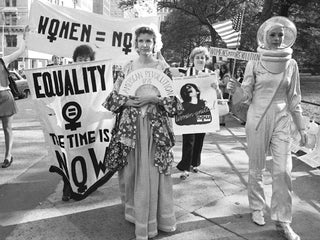Summary
When Adriana Ocañas joined CreditCards.com as an editor in October 2018, she dug into the website’s demographic data and noticed that about half of the visitors were women. But she felt the website did not have enough content speaking directly to that audience. “We covered finance, but only really approached…
The content on this page is accurate as of the posting date; however, some of our partner offers may have expired. Please review our list of best credit cards, or use our CardMatch™ tool to find cards matched to your needs.
When Adriana Ocañas joined CreditCards.com as an editor in October 2018, she dug into the website’s demographic data and noticed that about half of the visitors were women.
But she felt the website did not have enough content speaking directly to that audience.
“We covered finance, but only really approached it from one angle. When creating our content, we didn’t keep other experiences in mind,” Ocañas recalls.
What evolved from that revelation was a series of female-focused online content published under the To Her Credit banner. On Jan. 28, 2020, Ocañas and two of her CreditCards.com editorial colleagues – Caitlin Mims and Emily Sherman – took the concept to the next level by hosting CreditCards.com’s first-ever To Her Credit live event.
“Promoting financial literacy for women is really important to us. Even though we come from slightly different backgrounds, we all know women who were never taught how to manage money and didn’t feel empowered to learn. That’s what we want to change,” Mims says. “Our message seems to resonate, and most people have been very eager to get involved right from the beginning.”
During the inaugural To Her Credit workshop, held at a coffee shop in Austin, Texas, a gathering of women (and even a few men) picked up budgeting tips from four certified financial planners: Sophia Bera, Daphne Jordan, Whitney Morrison and Anna Popke.
During the first hour, attendees heard advice from the four financial planners; then, some of the attendees sat down for free, one-on-one consultations with the planners.
Some key takeaways
Sophia Bera: Determine your net worth
Computing your net worth provides a “barometer” of your financial health, Bera says, and enables you to achieve your financial goals. To determine your net worth, subtract your total liabilities (such as student loan debt or credit card debt) from the value of your assets (such as a retirement account or a home).
Daphne Jordan: Finding budgeting tools that work for you
This could be as simple as tracking your budget on a piece of paper or in an Excel spreadsheet. Or these tools might be your monthly bank and credit card statements. Better yet, you could rely on a budgeting app like Mint, Goodbudget or You Need a Budget (YNAB).
Whitney Morrison: Create spending buckets
Divide your monthly spending into three broad categories: current commitments (like rent, car payments and credit card bills), habits (like groceries, dining out and entertainment) and future commitments (savings and investments). If your gross income is $60,000 a year, for example, Morrison suggests allocating 30% to 35% for current commitments, 15% to 20% for habits and the rest for future commitments.
Anna Popke: Pinpoint an emotional reason to set a budget
That reason could be a fear of being homeless, for instance. In this case, a budget could help ensure you’ve got enough money to pay your rent or mortgage. “If you can find an emotional reason why it is important to budget, you will be unstoppable,” she says. “And then you will not have any of those fears – you can address them.”
Why focus on budgeting?
A 2018 study commissioned by investment giant Merrill Lynch found that 84% of American women expressed confidence in their budgeting skills. But that means 16% of American women – or roughly 27 million women – lacked confidence in their budgeting expertise.
“You can only get so much actionable advice for improving your financial life by reading an article. At the event, we could give that advice directly and answer questions about each woman’s personal situation in real time,” Sherman says.
Ocañas says the team hopes to host more To Her Credit events in Austin, with an eye toward eventually expanding to other cities.
“What makes To Her Credit unique is that we actively try to enter a conversation with our audience in every story we publish. When we first started, we were doing this by interrupting our traditional financial advice with our own stories and experiences,” Sherman says. “From there, it seemed the logical next step to have a more direct conversation with the women we were speaking to.”
Editorial Disclaimer
The editorial content on this page is based solely on the objective assessment of our writers and is not driven by advertising dollars. It has not been provided or commissioned by the credit card issuers. However, we may receive compensation when you click on links to products from our partners.



